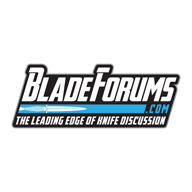So here's where I'm at with the controller build. Can't wait to see this hooked up to a burner! [emoji16][emoji91]
Here's a shot of the controller with wiring mostly completed. All components connected and for now I've connected an led at the "switched" (SSR) output just to make sure the circuit is being completed by the activation of the SSR by the PID. For the main plug I decided to use a computer style male-female plug in the body of the controller that can be seen on the bottom right.
On this side you can see the secondary switch (with indicator light) that switches on/off the 12VDC power to the SSR, making it so that the PID can be used in "read only" mode for checking temperature. Since there is a male/female plug for the TC also, it will be easy to plug in a different thermocouple if interested in using this for other components with a TC installed.
This looks pretty jumbled, and I should sketch out a separate diagram for the exact component wiring for this setup with lights etc, but you can at least see the main components wired together here.
In a nutshell: Main power (hot line) comes in to the main switch, runs through the fuse, and then to the PID (alongside common wire which runs straight from power source to PID). The lights are connected in a parallel circuit with smaller wires. One light turns on when main power is on, the second activates when the SSR is switched on (which in the case of this setup, means the burner will be running high). From there there are smaller wires connecting the 12VDC current from PID to SSR. There is a small switch in this line to enable/disable SSR function. Last, the SSR switches opens/closes a second leg of the hot line which runs from the "on" leg of the main switch to the hot leg of the solenoid. A second leg of common wire also runs alongside this which will later be connected to solenoid. For now I have these 2 solenoid wires connected to a light for an indicator to make sure everything is switching correctly. And because I still need to buy a solenoid [emoji23][emoji23]

Shows the wiring for the secondary 12VDC switch with indicator light ran in parallel.
Closeup of the cool little LED lights I found for at the local electric store here. Hard to imagine you can pump 220 volts through a single LED! Hence running in parallel to avoid any issues like voltage drop etc.
Last, showing the main plug with male/female connector, fuse holder in the back, and TC wiring coming from side. I may find a better solution for TC wiring but this works fine for now

Next is checking pathways a 5th time with the multimeter to make sure all wiring is right and making sure no current is flowing through the controller housing then turning on. Stay tuned

Sent from my iPad using Tapatalk
 www.bladeforums.com
http://www.flemingknives.com/ribbonforge.htm
www.bladeforums.com
http://www.flemingknives.com/ribbonforge.htm www.bladeforums.com
www.bladeforums.com
















